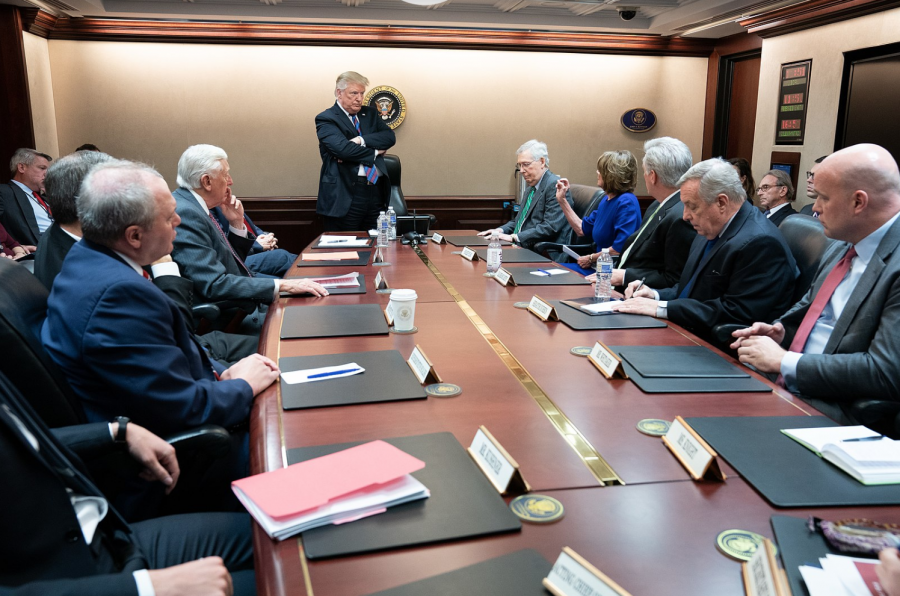Pausing the Shutdown
President Donald Trump likes to deal in superlatives. During his campaign, he vowed he would be the “the greatest jobs creator that God ever created.” He told Australian Prime Minister Malcolm Turnbull that he’s “the world’s greatest person.”
Trump can now add how the “longest government shutdown occurred during his presidency” to his list of superlatives. Starting on Dec. 22, the partial government shutdown lasted 35 days, beating the 21-day shutdown of 1995-1996. The main sticking point in negotiations during the shutdown was allocation of funds for Trump’s much-touted wall on the southern border. Trump wanted $5.7 billion in funding for the wall, while Democrats, led by Speaker Nancy Pelosi (D-C.A.) and Senate Minority Leader Chuck Schumer (D-N.Y.) strongly opposed any such measure.
The deadlock ended on Jan. 25, when a measure was passed to reopen the government for another three weeks. While this measure did not allocate funding for the border wall, it did provide federal employees with back pay and included long-term funding for the Department of Homeland Security (DHS). These three weeks would allow for negotiations to take place on border security. However, if no deal is reached by Feb. 15, the three weeks will have merely been a small pause in a long shutdown.
While a recent meeting between the 17 lawmakers tasked with leading the negotiations was described by those involved as “friendly,” several lawmakers on the committee felt that talks were still in their earliest stages, according to The Hill.
Trump said on Feb. 1 that there’s a “good chance” he would declare a national emergency. This would essentially bypass Congress and allow him to allocate emergency funds to border security. This is a move that would most likely be challenged by courts and potentially even Congress. He has also continued to lash out at Democrats and said in a New York Times interview that Pelosi “is hurting our country very badly by doing what she’s doing.”
Pelosi seems to have stopped antagonizing Trump for the moment in order to focus on working on a deal. She has publicly stated how the deadline of Feb. 15 means that a conference report would have to be submitted by Feb. 8. The time-frame for progress is therefore significantly shorter than many think.
Both parties are doing their part to make a deal more difficult to reach, however. Despite the GOP’s general negative feelings toward Trump declaring a national emergency, Senator Lindsey Graham (R-S.C.) has been publicly prodding Trump to declare one. A group of progressive representatives has been telling Democrats to refuse to give any more money toward DHS funding.
Senate Majority Leader Mitch McConnell (R-K.Y.) told reporters at a recent weekly press conference that he is for “avoiding a government shutdown and avoiding the president feeling he should declare a national emergency.”
Unless there is a breakthrough soon, though, those could be the only two options faced by the White House.
Photo Caption: President Trump meeting with congressional leaders in January.
Photo via Wikimedia Commons under Creative Commons License.












